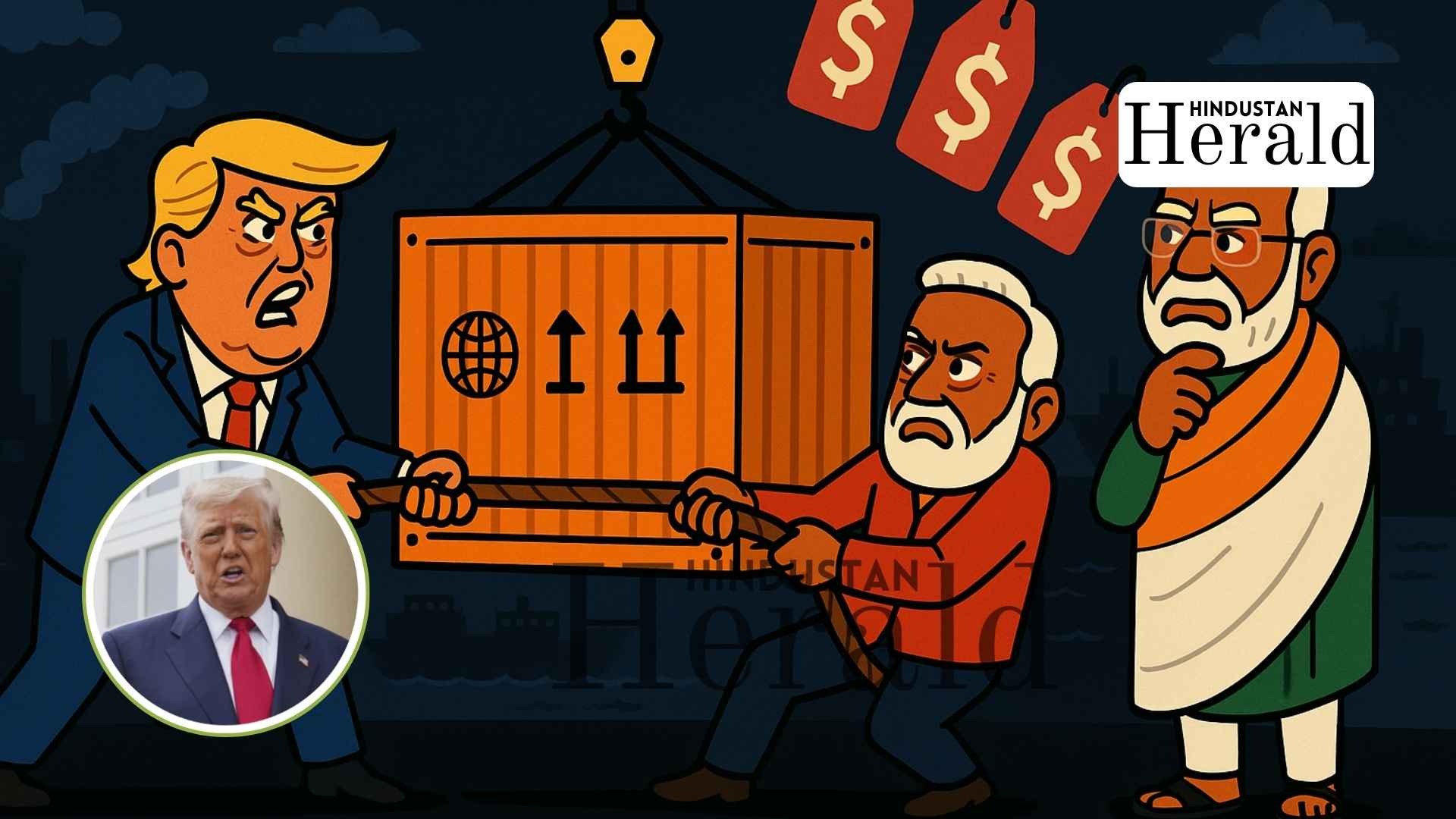Washington, August 9: Walk through any American supermarket aisle today and you’ll see the real cost of Donald Trump’s tariff wars stacked high on the shelves. Cereal boxes, washing machines, even tinned fruit almost everything costs more than it did before the former president declared he could bend global trade to America’s will. For all the slogans about “winning,” what the United States has ended up with is a smaller wallet, a shorter list of friends, and a China that looks more resilient than ever.
The Home Bill Nobody Wanted
According to AP News, the average U.S. household now spends roughly USD 2,400 extra a year thanks to import tariffs. That’s not a figure you can ignore, even in a wealthy nation. It seeps into rent decisions, family budgets, and business orders. The Financial Times captured it well America has managed to create “the second worst of all worlds.” Manufacturers pay more for the parts they need, exporters find their goods blocked or priced out overseas, and consumers foot the bill for the whole mess.
The point of this exercise, remember, was to revive U.S. manufacturing. But protection on paper hasn’t translated into a competitive advantage. In fact, several American firms are losing ground to foreign competitors who aren’t burdened with the same inflated input costs.
How To Lose Friends And Strain Alliances
Tariffs have long been a diplomatic bargaining chip, but in Trump’s hands they became more like a blunt club swung not just at adversaries, but at close partners. India felt it directly.
When Washington slapped tariffs on Indian goods, John Bolton, Trump’s own former national security adviser, called it an “enormous mistake” in remarks carried by The Hill and The Times of India. He wasn’t speaking out of sentiment. Bolton argued that penalising allies undermines trust and hands strategic space to rivals. It’s a point worth underlining for India: you can’t preach partnership while punishing the very partners you want on your side.
Beijing’s Steadier Hand
If this trade war had a scoreboard, China would be leading on points. The Washington Post notes that Beijing, faced with tariffs designed to force concessions, simply refused to yield. Instead, it re-routed supply chains, secured new trade partners, and projected an image of endurance. For smaller economies watching from the sidelines, this was instructive the U.S. could be resisted, and perhaps outlasted.
For India, which competes with China in global markets, the episode underscores a truth: resilience in trade comes not from isolation but from adaptability.
The Bigger Shockwave
Europe has been watching with concern. The Le Monde editorial board warned earlier this year that sustained tariff escalation risks slowing global growth and even tipping economies into recession. Supply chains built over decades are tangled across continents; pulling at one thread can unravel many others.
Meanwhile, the Financial Times observes that U.S. trade policy has shifted from strategy to short-term political manoeuvring. That instability is poison to long-term investment. If investors cannot predict tomorrow’s rules, they are less likely to commit capital today whether in Detroit or in Delhi.
The Case Tariff Defenders Make
Supporters of Trump’s approach insist that short-term pain was inevitable if America was to correct what they see as decades of unfair trade deals. They point to isolated cases of factory reopenings and the symbolic power of “buy American” rhetoric. But most of these victories are fleeting. One tariff cycle ends, another begins, and industries are left trying to plan in the fog.
For both the U.S. and India, real competitiveness rests on a different foundation: skilled workers, modern infrastructure, efficient regulation, and the kind of innovation that makes protection unnecessary.
A Lesson India Should Not Ignore
For New Delhi, the takeaway is clear. Protectionist instincts can be politically tempting they play well to domestic audiences and offer the illusion of control. But if the world’s largest economy can lose ground by going down that path, an emerging economy like India has even less room for error.
The country’s ambitions in manufacturing, technology, and services depend on predictable, rules-based trade relationships. That means engaging with partners, not picking avoidable fights. Strategic tariffs have their place, but indiscriminate trade wars are a luxury no one can afford for long.
The Scorecard Speaks
From the Financial Times to Le Monde, from the Washington Post to Bolton’s own testimony, the consensus is stark: the Trump-era tariff wars delivered higher costs, weaker alliances, and an opening for rivals to advance. That’s not a blueprint for national strength it’s a warning of how quickly influence can drain away when trade policy becomes a political weapon.
If there’s a moral here for India’s own trade debates, it is this: winning in the modern economy isn’t about building higher walls, but about building stronger bridges.
Stay ahead with Hindustan Herald — bringing you trusted news, sharp analysis, and stories that matter across Politics, Business, Technology, Sports, Entertainment, Lifestyle, and more.
Connect with us on Facebook, Instagram, X (Twitter), LinkedIn, YouTube, and join our Telegram community @hindustanherald for real-time updates.
Veteran columnist and social commentator offering sharp perspectives on politics, policy, and society.



